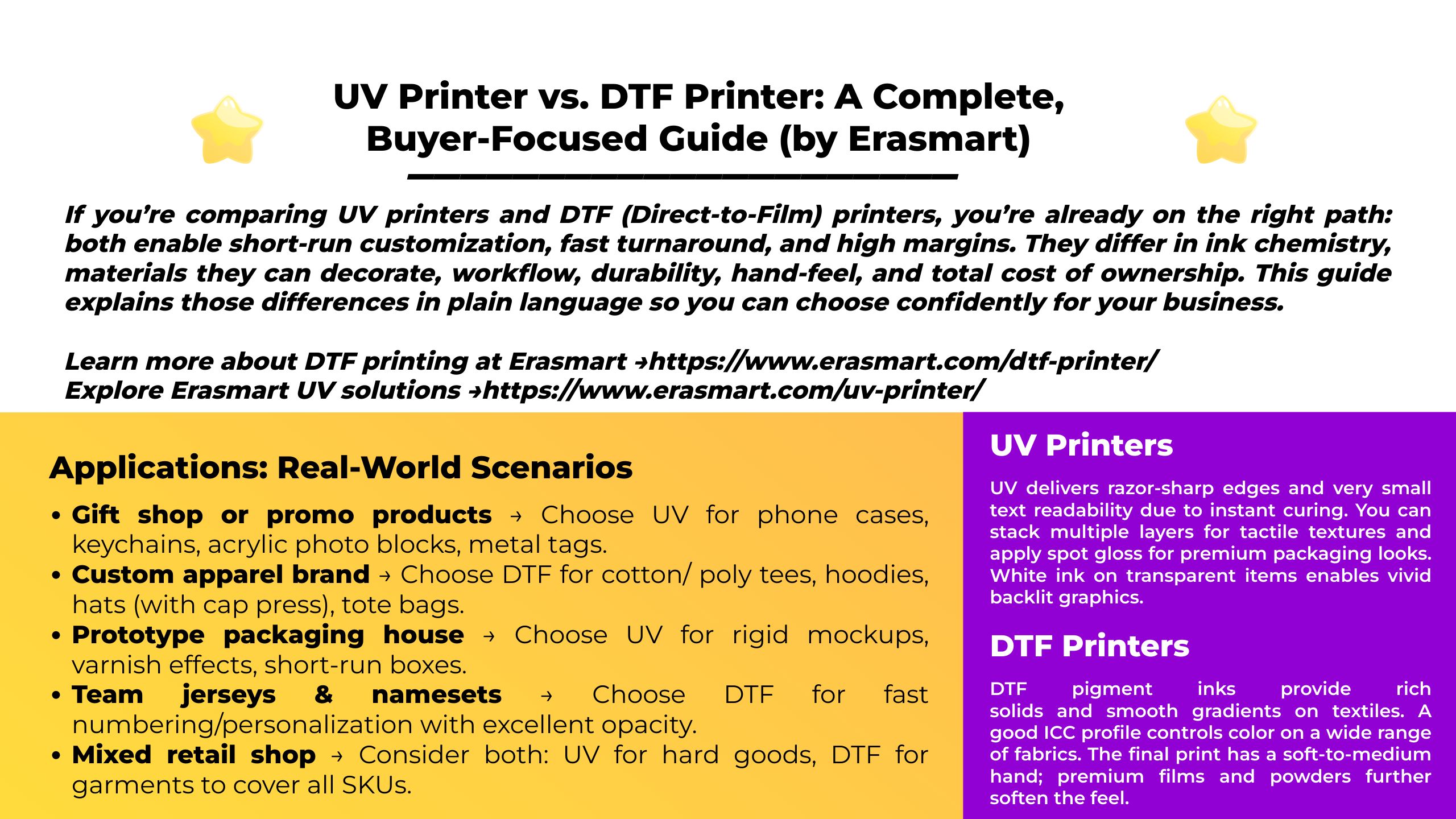UV Printer: The Ultimate Guide to Ultraviolet Printing Technology
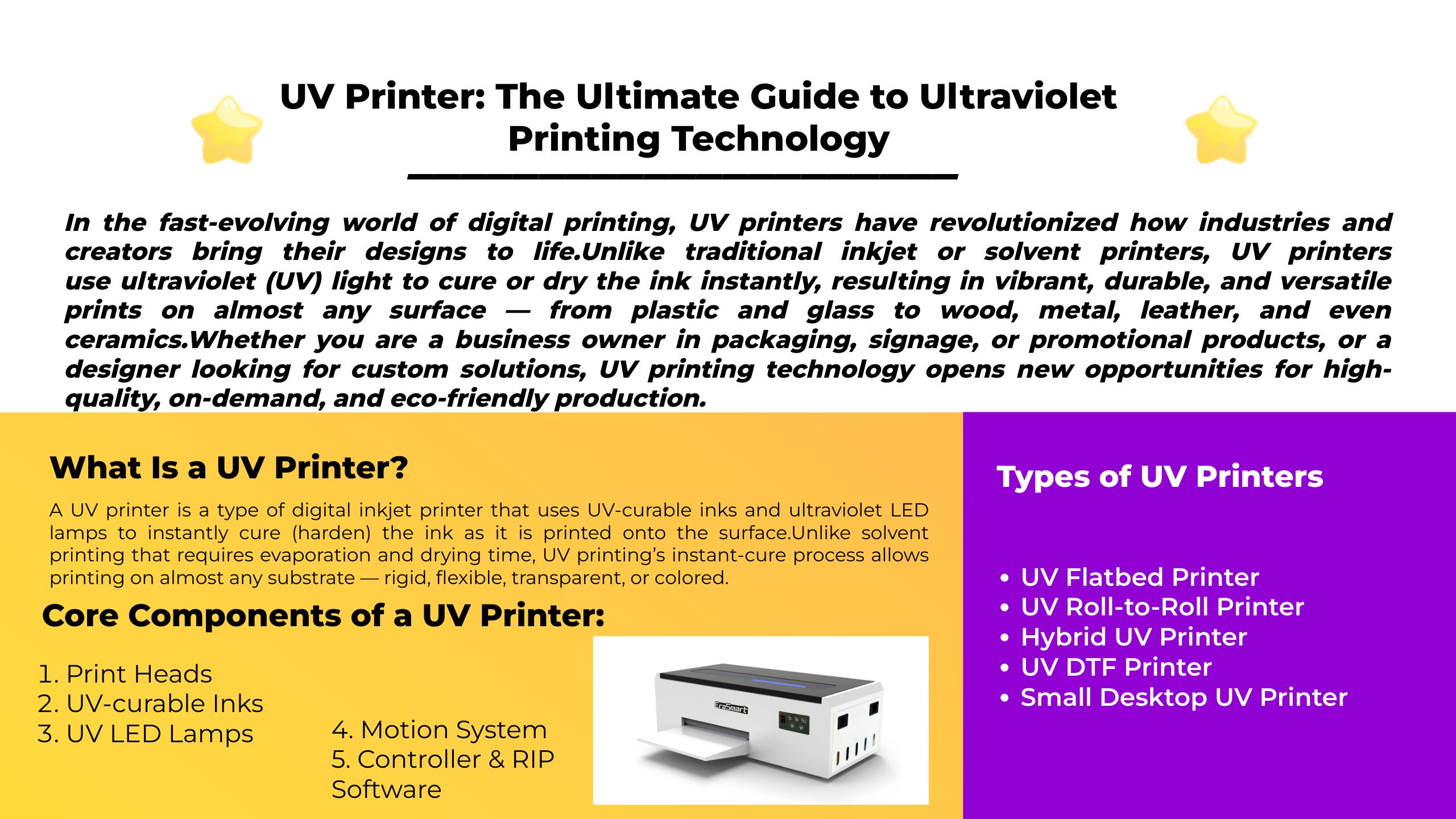
In the fast-evolving world of digital printing, UV printers have revolutionized how industries and creators bring their designs to life.
Unlike traditional inkjet or solvent printers, UV printers use ultraviolet (UV) light to cure or dry the ink instantly, resulting in vibrant, durable, and versatile prints on almost any surface — from plastic and glass to wood, metal, leather, and even ceramics.
Whether you are a business owner in packaging, signage, or promotional products, or a designer looking for custom solutions, UV printing technology opens new opportunities for high-quality, on-demand, and eco-friendly production.
What Is a UV Printer?
A UV printer is a type of digital inkjet printer that uses UV-curable inks and ultraviolet LED lamps to instantly cure (harden) the ink as it is printed onto the surface.
Unlike solvent printing that requires evaporation and drying time, UV printing’s instant-cure process allows printing on almost any substrate — rigid, flexible, transparent, or colored.
Core Components of a UV Printer:
- Print Heads: Usually piezoelectric inkjet heads that eject micro-droplets of ink with extreme precision.
- UV-curable Inks: Special inks containing photoinitiators that solidify under UV light.
- UV LED Lamps: Emit UV light to cure the ink instantly after it is deposited.
- Motion System: High-precision linear rails and servo motors for stable print movement.
- Controller & RIP Software: Manage color, resolution, and printing parameters.
Erasmart UV Printer List

Compact entry-level model with L800 print head, ideal for small items and hobby projects (120*210mm print size).
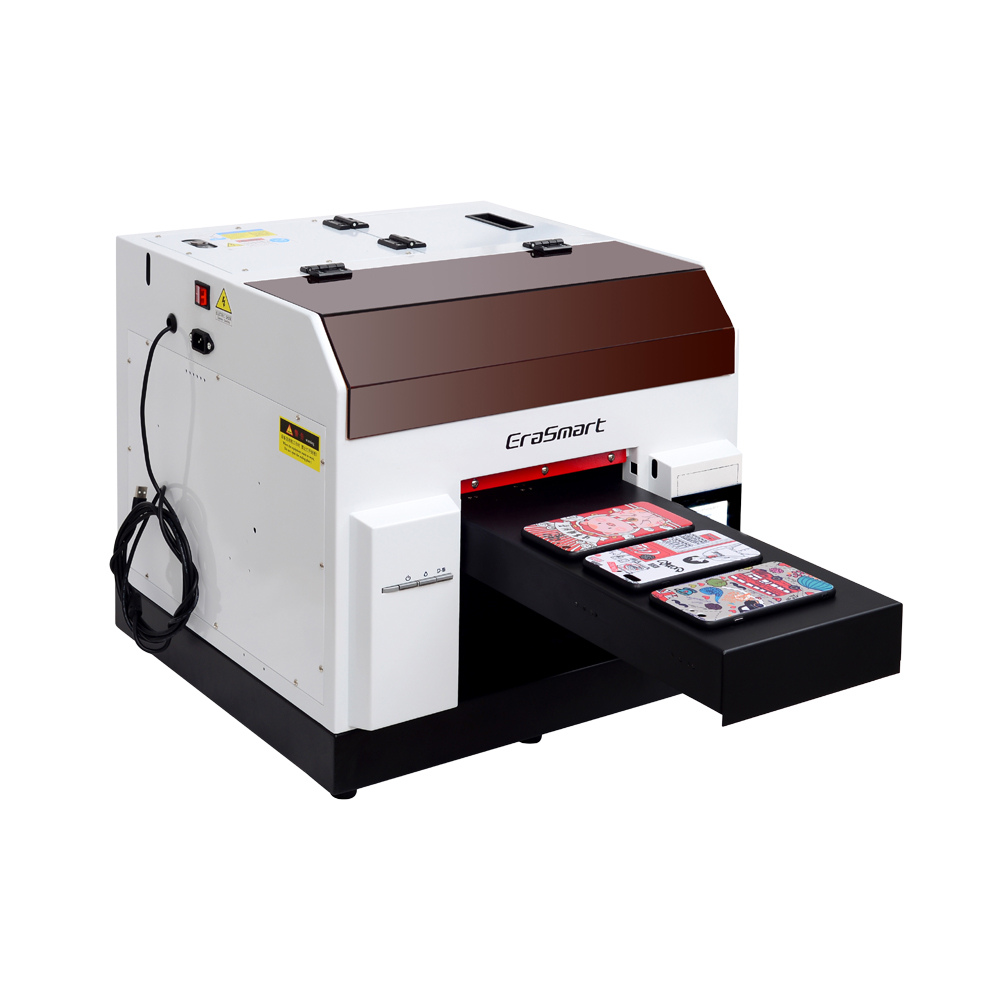
L800 print head with 210*290mm print size, perfect for small businesses and personalized gifts (0-130mm print height).
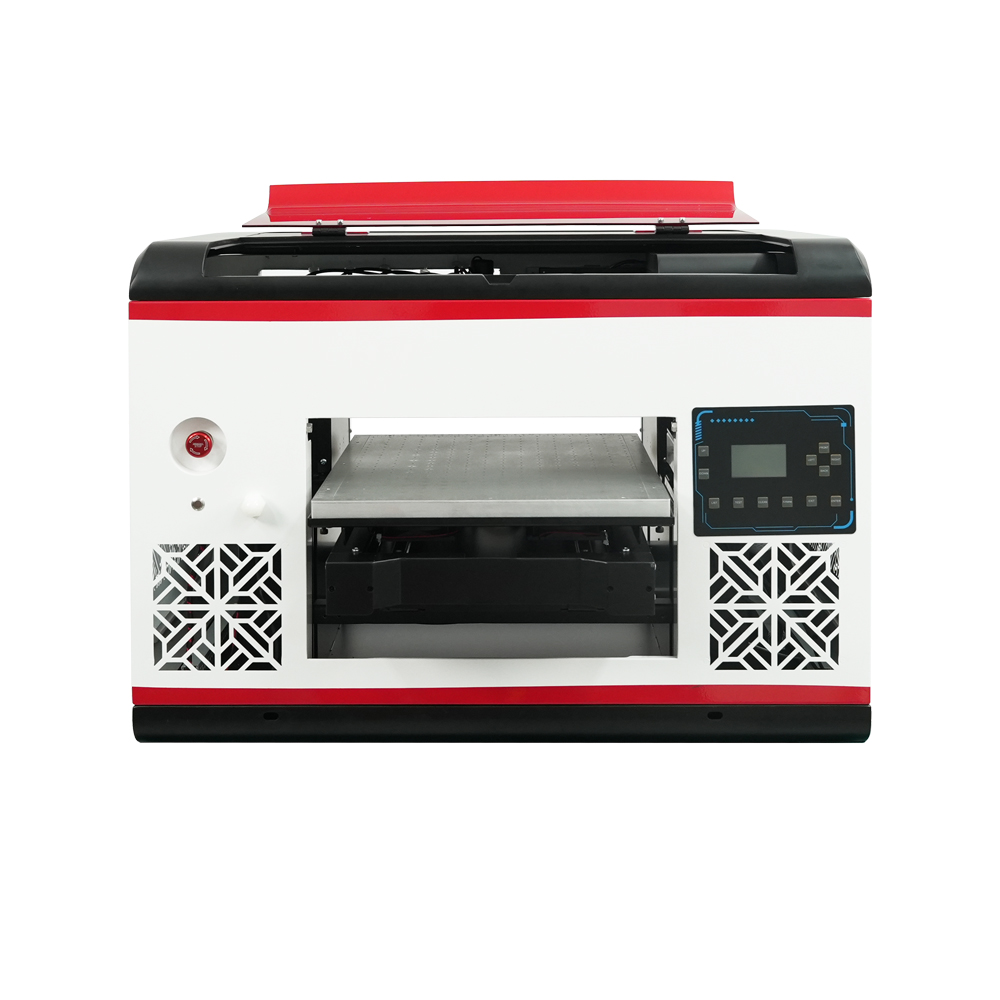
DX7 print head with 350*450mm print size, suction platform, and CMYK+WW+VV for high-volume production.
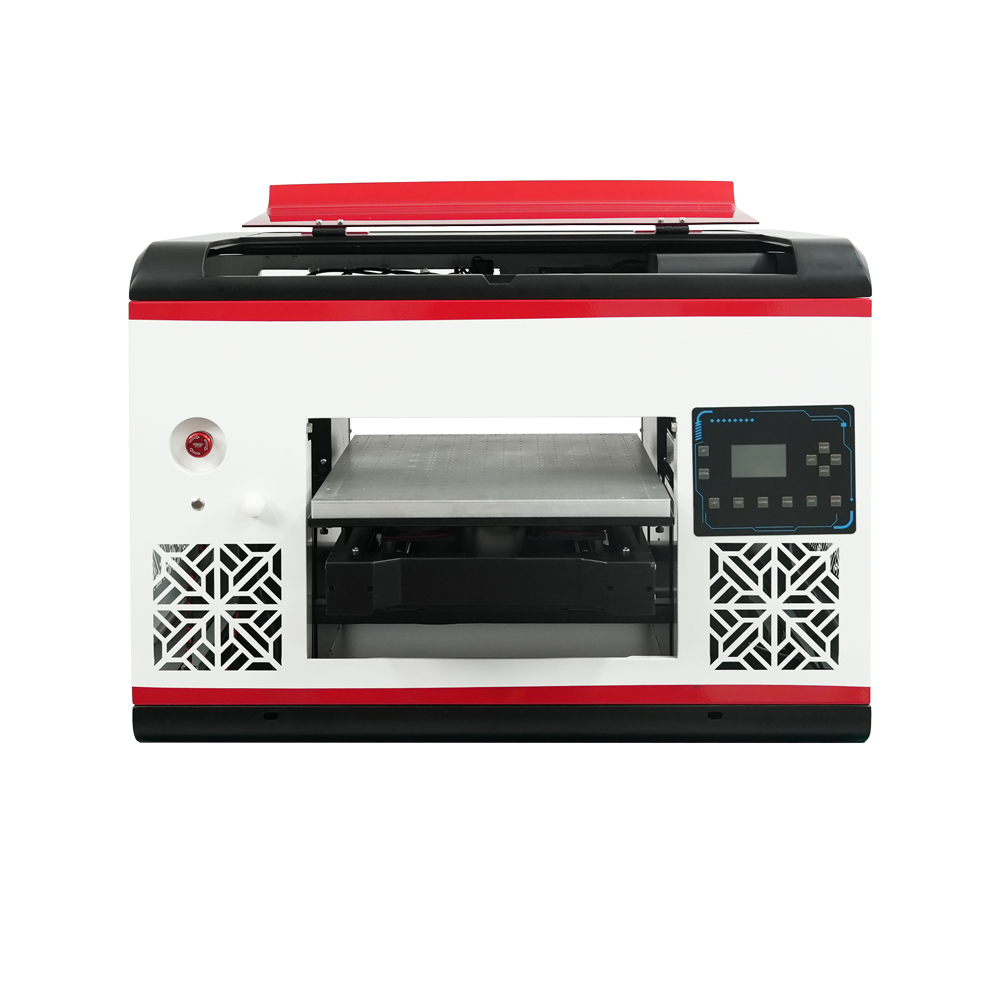
XP600 print head with 350*450mm print size, 5㎡/H speed, ideal for medium to large production runs.
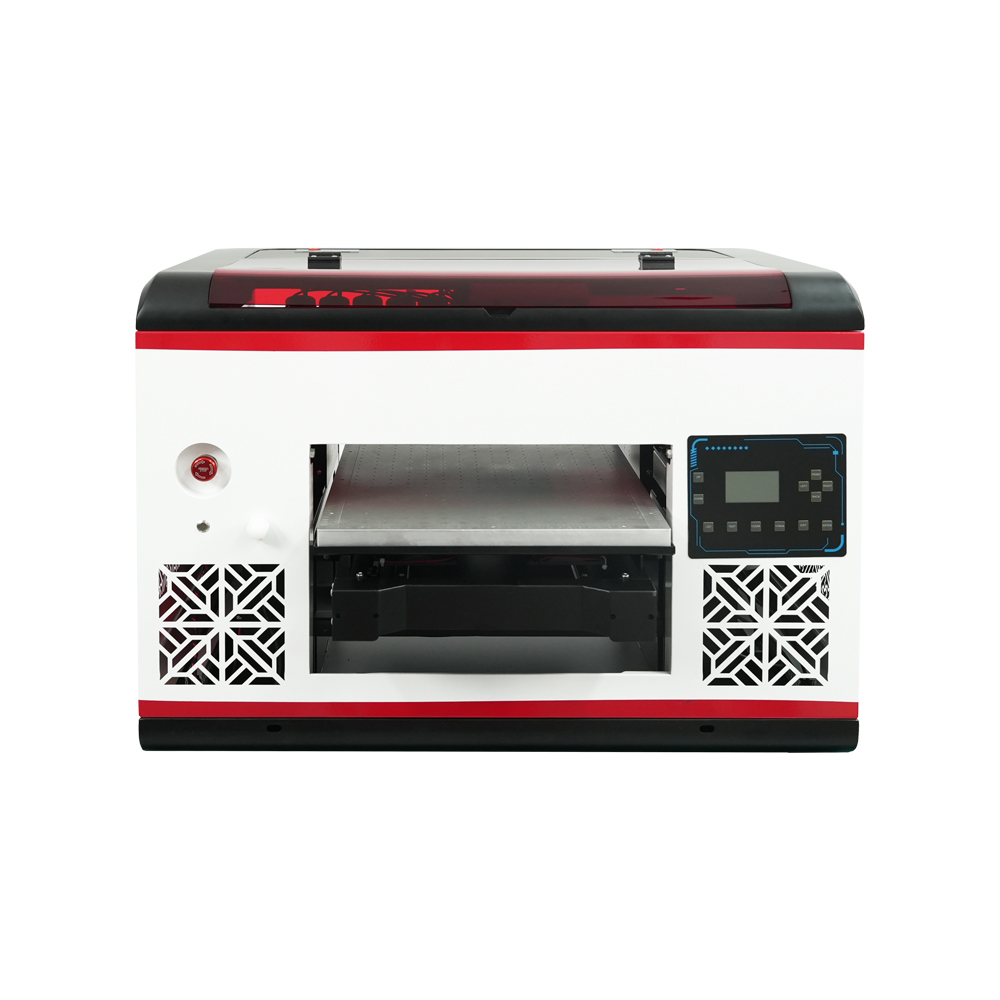
Dual XP600 print heads with 5.5㎡/H speed, CMYK+WW+VVVVVV for enhanced color gamut and productivity.
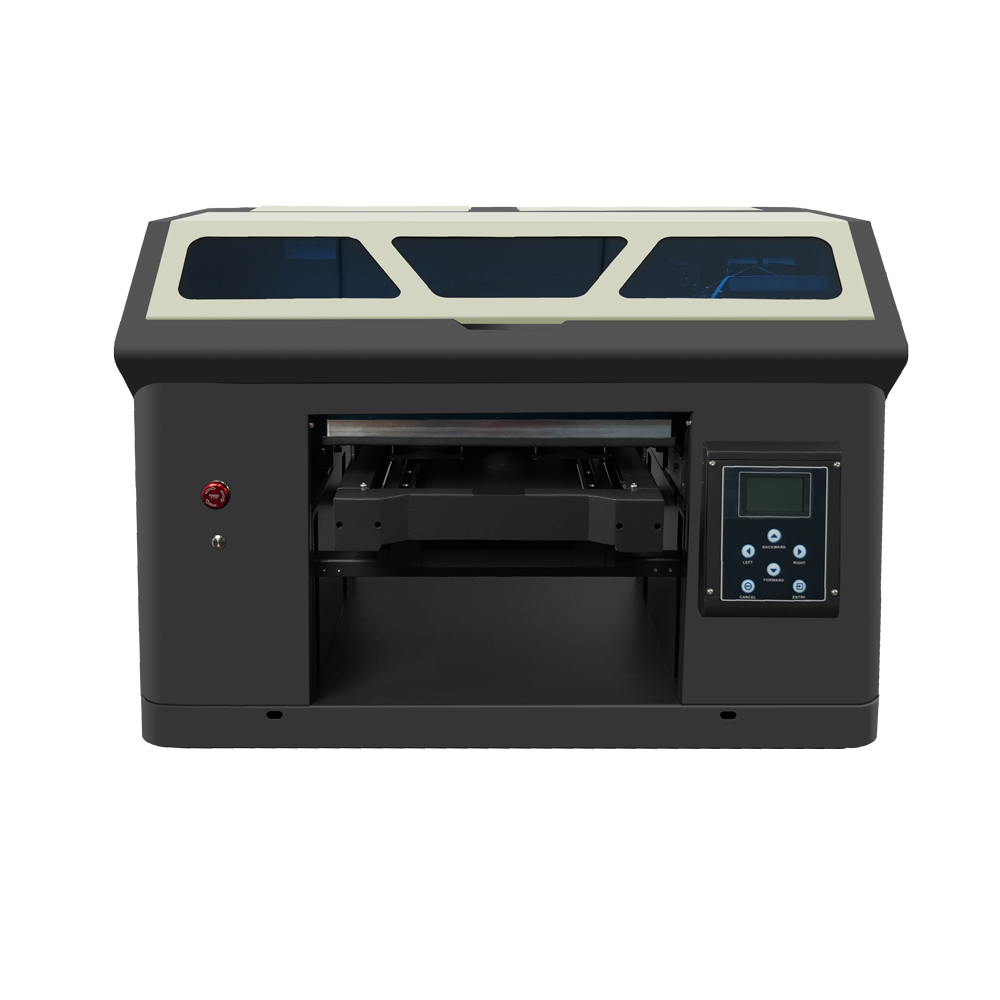
Dual XP600 print heads with 350*450mm print size, designed for industrial-grade continuous production.
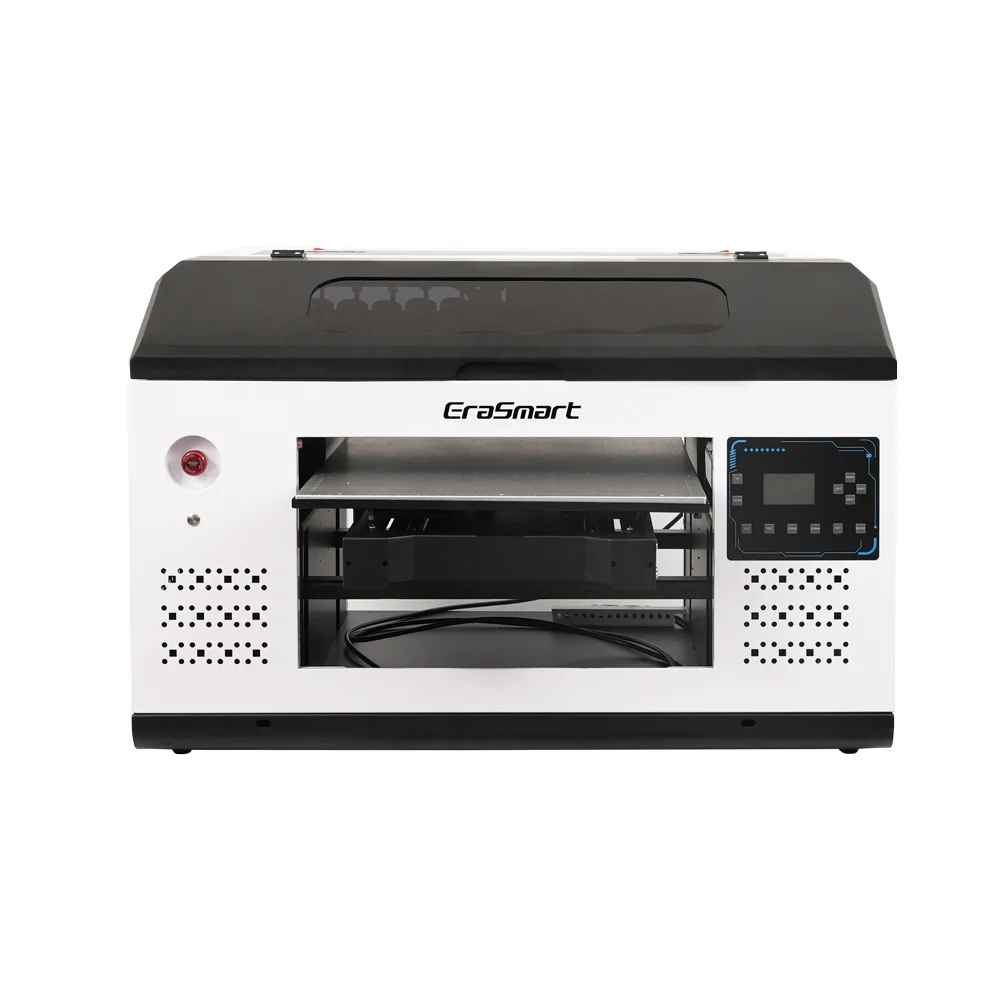
Large-format 420*600mm printer with dual XP600 heads, perfect for signage, panels and large materials.

Dual XP600 heads with automatic lamination, specialized for UV DTF film printing (width up to 350mm).
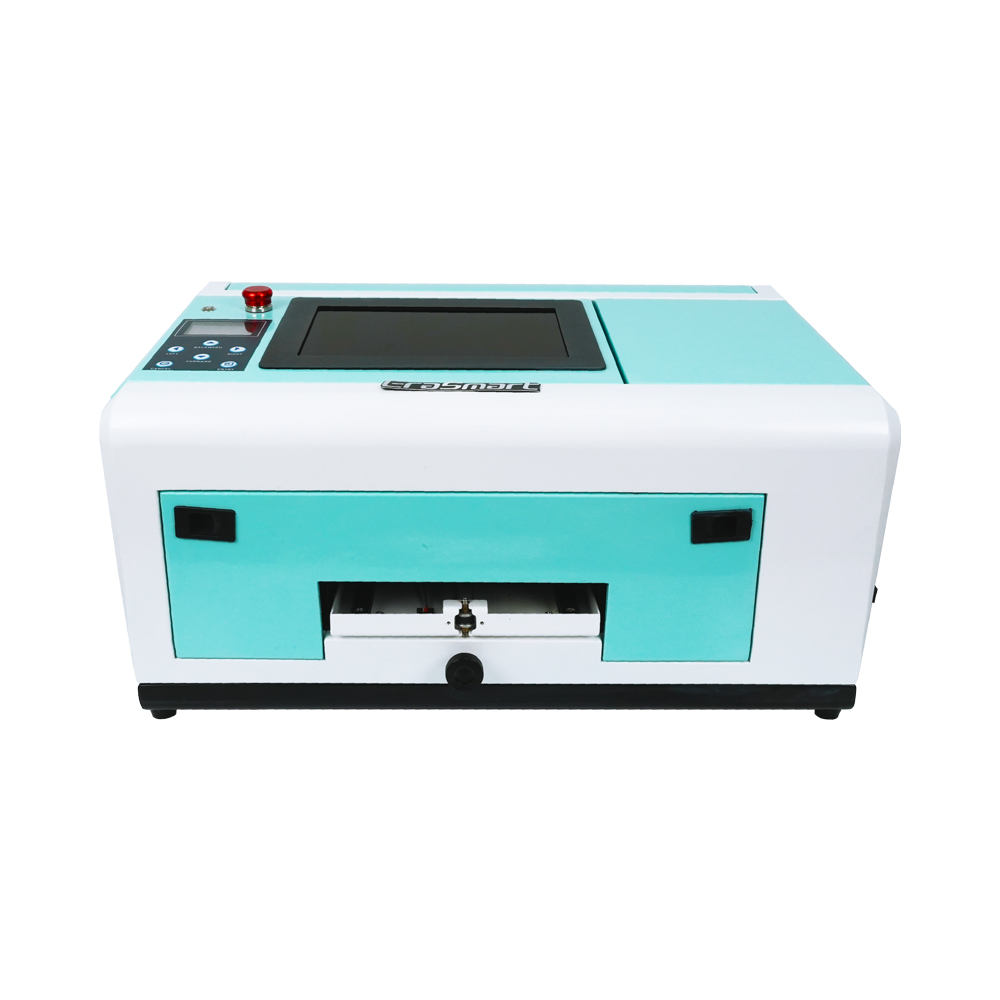
Specialized for phone cases (TPV/PVC/wood/metal), with 10-inch display and 0-10mm adjustable height.
How Does UV Printing Work?
Step 1: Image Preparation
The design or artwork is processed by RIP (Raster Image Processor) software, converting it into printer-readable data.
Step 2: Ink Deposition
The printer’s piezo print heads spray tiny droplets of UV-curable ink onto the substrate in a controlled pattern.
Step 3: Instant UV Curing
Immediately after the ink lands, UV LED lamps emit ultraviolet light that activates the photoinitiators in the ink, turning it from liquid to solid within milliseconds.
Step 4: Layering and Finishing
Because UV printing is non-absorptive, you can print multiple layers (for textures, 3D reliefs, or Braille effects) and achieve glossy, matte, or embossed finishes.
Types of UV Printers
| Type | Description | Ideal Use |
|---|---|---|
| UV Flatbed Printer | Prints directly onto flat rigid materials (acrylic, wood, metal, glass). | Signage, décor, packaging prototypes. |
| UV Roll-to-Roll Printer | Designed for flexible substrates like vinyl, film, and fabric. | Banners, wallpapers, vehicle wraps. |
| Hybrid UV Printer | Combines flatbed and roll printing in one machine. | Mixed media production. |
| UV DTF Printer | Prints onto a PET film, then transfers to irregular objects. | Tumblers, bottles, phone cases. |
| Small Desktop UV Printer | Compact units for personalization and gifts. | Phone covers, pens, accessories. |
Advantages of UV Printing Technology
- Print on Almost Any Surface
UV printers can print on metal, glass, acrylic, wood, ceramic, plastic, fabric, and leather — virtually any substrate. - Instant Drying
UV ink cures immediately under UV light, allowing zero waiting time and no smudging. - Vibrant and Durable Colors
The cured ink layer is tough, scratch-resistant, and UV-resistant, maintaining bright colors for years. - Eco-Friendly Printing
UV printers produce no VOCs, require no solvents, and reduce waste, making them environmentally safer. - Raised & Textured Effects
Layered printing enables 3D textures, Braille, and embossing effects that traditional printers can’t achieve. - White & Varnish Ink Printing
Allows under-printing on dark materials and adding glossy or matte finishes for premium results. - Low Maintenance and Long Life
Modern UV LED systems last tens of thousands of hours and consume less energy than mercury lamps.
UV-Curable Inks: The Heart of the Technology
UV inks are specially formulated to cure under UV light instead of drying by evaporation.
They contain:
- Monomers and Oligomers – Form the base polymer layer.
- Pigments – Provide color.
- Photoinitiators – Trigger polymerization under UV light.
Advantages of UV inks:
- High chemical and abrasion resistance.
- Odorless and environmentally safe.
- Excellent adhesion on multiple materials.
Materials Suitable for UV Printing
| Material | Example Applications |
|---|---|
| Acrylic | Display panels, LED signs |
| Metal | Nameplates, aluminum panels |
| Glass | Décor panels, mirrors, awards |
| Plastic (ABS, PVC, PET) | Promotional gifts, phone cases |
| Wood | Furniture, signage, décor items |
| Ceramic | Tiles, mugs, souvenirs |
| Leather | Wallets, shoes, accessories |
UV printing’s ability to print on non-porous materials is what sets it apart from other technologies.
Applications of UV Printers
1. Signage and Display
Large-format UV flatbed printers produce durable outdoor and indoor signs, backlit panels, and exhibition displays.
2. Packaging and Prototyping
UV printers allow direct printing on cartons, bottles, or packaging prototypes with instant proofs.
3. Promotional Products
Used for custom printing on pens, USB drives, lighters, power banks, and gifts.
4. Industrial and Electronic Components
Print directly on control panels, keypads, or instrument casings.
5. Decorative and Interior Design
Wood panels, glass walls, tiles, and furniture elements can all be customized with UV graphics.
6. Textile and Apparel Accessories
UV DTF (Direct to Film) enables vibrant transfers on shoes, bags, and synthetic fabrics.
UV Printing vs. Traditional Printing
| Feature | UV Printing | Traditional Printing (Solvent/Screen) |
|---|---|---|
| Drying Time | Instant | Minutes to hours |
| Material Compatibility | Almost any material | Limited (paper, fabric) |
| Color Durability | High (UV & scratch resistant) | Moderate |
| Environmental Impact | Eco-friendly | Uses solvents, VOCs |
| Setup Cost | Higher initial, low running | Lower setup, higher maintenance |
| Special Effects | 3D, texture, varnish | Limited |
| Small Batch Printing | Cost-effective | Expensive for short runs |
Maintenance and Care of UV Printers
- Regular Print Head Cleaning – Prevents nozzle clogging.
- Ink Circulation System Maintenance – Keeps pigments evenly dispersed.
- UV Lamp Inspection – Ensure consistent curing intensity.
- Temperature and Humidity Control – Stable environment extends printer life.
- Use Genuine Inks – To avoid chemical incompatibility and ensure adhesion.
Future Trends in UV Printing
- UV DTF (Direct to Film) Expansion: Growing trend for printing on irregular shapes.
- 3D UV Printing: Multi-layer printing for tactile designs and Braille.
- Smart IoT Printers: Remote monitoring, auto-calibration, and predictive maintenance.
- Green Manufacturing: Water-based UV inks and recyclable substrates.
- Hybrid Automation: Robots handling loading/unloading for 24/7 production lines.
Buying Guide: How to Choose the Right UV Printer
- Material Compatibility – Flatbed for rigid, roll-to-roll for flexible, hybrid for both.
- Print Size – A3, A2, or large-format depending on production needs.
- Ink Configuration – CMYK + White + Varnish for maximum versatility.
- Print Head Brand – Epson, Ricoh, Konica Minolta — each affects resolution and speed.
- UV Lamp Type – Prefer LED UV for efficiency and longevity.
- Software & Color Management – Check ICC profile support and RIP compatibility.
- After-Sales Support – Reliable training, maintenance, and parts availability.
Advantages of UV LED over Mercury Lamp Systems
| Feature | UV LED | Mercury Lamp |
|---|---|---|
| Lifetime | 10,000–20,000 hours | ~1,000 hours |
| Power Consumption | Low | High |
| Heat Generation | Minimal | High |
| Startup Time | Instant | Requires warm-up |
| Environmental Impact | Eco-friendly | Contains mercury |
Industries Benefiting from UV Printing
- Advertising and Signage
- Gift Customization
- Home Décor
- Automotive Interiors
- Electronics Labeling
- Packaging
- Fashion Accessories
Common Questions About UV Printers
Q1: Can a UV printer print white ink?
Yes. White ink allows printing on dark or transparent materials by creating a background layer.
Q2: Is UV printing waterproof and scratch-resistant?
Yes. UV-cured inks form a hard coating that resists water, abrasion, and UV light.
Q3: Can I print on curved objects?
Flatbed UV printers are designed for flat surfaces, but with jigs or UV DTF films, you can print on curved or irregular items.
Q4: How long does UV ink last?
Typically 2–3 years outdoors and 5+ years indoors, depending on material and conditions.
Q5: What file formats are supported?
Most printers accept TIFF, JPG, PDF, and PNG files through RIP software.
Q6: Are UV printers safe to use?
Modern LED UV systems are safe and energy-efficient, but operators should avoid direct UV exposure.
Environmental Impact of UV Printing
UV printing aligns with global sustainability trends:
- Zero VOC emissions
- Energy-efficient curing
- Reduced waste and recycling possibilities
- No chemical solvents or water usage
Conclusion
UV printing represents the future of digital printing — fast, clean, and incredibly versatile.
With the ability to print vivid, full-color images on virtually any surface, UV printers have redefined personalization, manufacturing, and creative production.
For businesses seeking high-margin customization, eco-friendly printing, and on-demand manufacturing, investing in a UV printer is not just a technology choice — it’s a strategic advantage.
MAY BE YOU LIKE ALSO
EraSmart Printer
uv printer
DTF printer
DTG printer
Heat press machine
Advertising printer
Printer tools
DTF oven
Hot Press
Carving machine
Mug heat transfer
Laminating machine
Consumables
Printing INK
Cellphone case
Glass product
Cleaning fluid
Cotton swab
Contact Us
WhatsApp:+8618566233796
WeChat: +8618566233796
Mobile: +8618566233796
Web:www.erasmart.com
Shop:www.erasmartmall.com
WhatsApp us
Request A Quote
Just provide a few details and we will help you get quick quotes!


